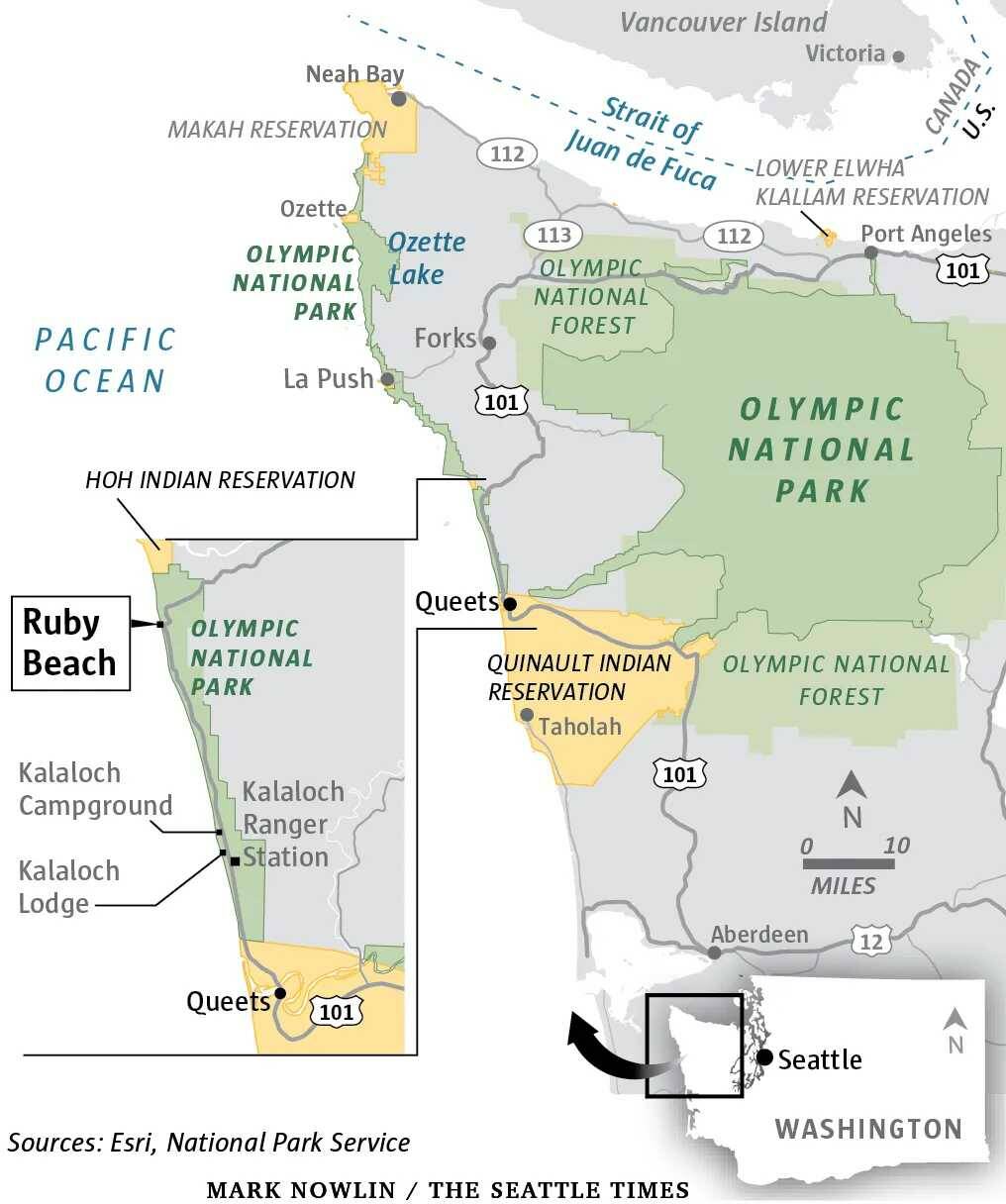Lonely Planet has picked Ruby Beach in Olympic National Park as among 25 of the “world’s best beaches.”
It’s the only one from the United States to make the list, with the travel guide company tagging the coastal spot the “best beach for beachcombers.”
Ruby Beach is a great introduction to Washington and the Pacific Northwest, Lonely Planet wrote. “It looks like waters have lashed wildly against the shoreline here until trees have toppled and the (sea stacks are) found with a swirling froth crashing at their feet.”
The sea stacks are the vestiges of the former coastline that was slowly eroded by the crashing waves. The stacks are made of the Hoh assemblage, volcanic rocks and debris flow that were deposited when the beach was underwater and compressed against the continent, according to the Washington Department of Natural Resources.
“It’s great for beachcombers — agates, garnets and sea glass all glitter in the sand — but there is treasure inside its tide pools, too,” Lonely Planet continued. “Anemones, sea urchins, purple starfish and skittering crabs, make it a wonderland for children and adults alike.”
Ruby Beach got its name for those minerals that color the beach. Almandite, a type of garnet, is known for its red color and is concentrated in patches along the beach by the wave action, the DNR wrote.
The greater Kalaloch beach area, which Ruby Beach is a part of, is also a safe haven for thousands of species of marine wildlife. There are also nesting colonies of birds, like common murres and tufted puffins that occupy the rock outposts.
British Columbia’s Chesterman Beach by Vancouver Island also made the list, with Lonely Planet calling it the best spot for winter surfing.
The scenic shore is “also great for kayaking, stand-up paddleboarding, whale watching, and observing the hundreds of colorful starfish, anemones, urchins and other sea creatures that appear in tide pools,” Lonely Planet wrote.



